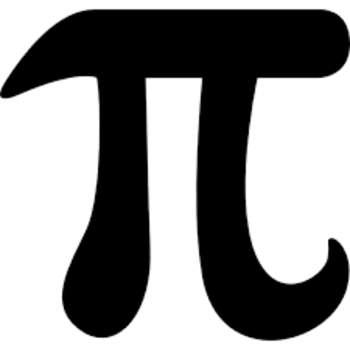What is the integral of #cos(t^2)#?
3 Answers
Explanation:
Well, the only way I know how to do this without using functions I don't know (or looking up Fresnel integrals) is to expand this into a Maclaurin series to estimate an easier form of the function to integrate. If you want something centered at a different
#cos(t^2) = |[sum_(n=0)^(oo) ((-1)^(n) x^(2n))/((2n)!)]|_(x = t^2)#
#= sum_(n=0)^(oo) ((-1)^(n) t^(4n))/((2n)!)#
#= 1 - t^4/2 + t^8/24 - t^12/720 + t^(10)/(40320) - . . . #
graph{(y - cos(x^2))(y - 1 + x^4/2 - x^8/24 + x^12/720 - x^(10)/(40320)) = 0 [-4.934, 4.935, -2.464, 2.47]}
Here, the bottom graph is the estimate graph from the Maclaurin series.
If we truncate this at the fifth nonzero term, we can at least get the integral near
#int cos(t^2) dt ~~ int 1 - t^4/2 + t^8/24 - t^12/720 + t^(10)/(40320)dt#
#= t - t^5/10 + t^9/(216) - t^(13)/(9360) + t^(11)/(443520)# for
#t# really close to#0# .
To compare, I used Wolfram Alpha to get:
#int_(-1)^(1) cos(t^2) dt = ul(1.8090)color(red)(4848 cdots)#
#int_(-1)^(1) 1 - t^4/2 + t^8/24 - t^12/720 + t^(10)/(40320)dt = ul(1.8090)color(red)(5009cdots)#
The only drawback is that this approximation only works near
#int_(-1.5)^(1.5) cos(t^2) dt = ul(1.79)color(red)(837cdots)#
#int_(-1.5)^(1.5) 1 - t^4/2 + t^8/24 - t^12/720 + t^(10)/(40320)dt = ul(1.79)color(red)(601cdots)#
#int_(-2)^(2) cos(t^2) dt = color(red)(0.92292292cdots)#
#int_(-2)^(2) 1 - t^4/2 + t^8/24 - t^12/720 + t^(10)/(40320)dt = color(red)(0.59954860cdots)#
#int_(-2.5)^(2.5) cos(t^2) dt = color(red)(1.21062cdots)#
#int_(-2.5)^(2.5) 1 - t^4/2 + t^8/24 - t^12/720 + t^(10)/(40320)dt = color(red)(-10.9426cdots)#
Well, the only way I know how to do this without using functions I don't know (or looking up Fresnel integrals) is to expand this into a Maclaurin series to estimate an easier form of the function to integrate. If you want something centered at a different
#cos(t^2) = |[sum_(n=0)^(oo) ((-1)^(n) x^(2n))/((2n)!)]|_(x = t^2)#
#= sum_(n=0)^(oo) ((-1)^(n) t^(4n))/((2n)!)#
#= 1 - t^4/2 + t^8/24 - t^12/720 + t^(10)/(40320) - . . . #
graph{(y - cos(x^2))(y - 1 + x^4/2 - x^8/24 + x^12/720 - x^(10)/(40320)) = 0 [-4.934, 4.935, -2.464, 2.47]}
Here, the bottom graph is the estimate graph from the Maclaurin series.
If we truncate this at the fifth nonzero term, we can at least get the integral near
#int cos(t^2) dt ~~ int 1 - t^4/2 + t^8/24 - t^12/720 + t^(10)/(40320)dt#
#= t - t^5/10 + t^9/(216) - t^(13)/(9360) + t^(11)/(443520)# for
#t# really close to#0# .
To compare, I used Wolfram Alpha to get:
#int_(-1)^(1) cos(t^2) dt = ul(1.8090)color(red)(4848 cdots)#
#int_(-1)^(1) 1 - t^4/2 + t^8/24 - t^12/720 + t^(10)/(40320)dt = ul(1.8090)color(red)(5009cdots)#
The only drawback is that this approximation only works near
#int_(-1.5)^(1.5) cos(t^2) dt = ul(1.79)color(red)(837cdots)#
#int_(-1.5)^(1.5) 1 - t^4/2 + t^8/24 - t^12/720 + t^(10)/(40320)dt = ul(1.79)color(red)(601cdots)#
#int_(-2)^(2) cos(t^2) dt = color(red)(0.92292292cdots)#
#int_(-2)^(2) 1 - t^4/2 + t^8/24 - t^12/720 + t^(10)/(40320)dt = color(red)(0.59954860cdots)#
#int_(-2.5)^(2.5) cos(t^2) dt = color(red)(1.21062cdots)#
#int_(-2.5)^(2.5) 1 - t^4/2 + t^8/24 - t^12/720 + t^(10)/(40320)dt = color(red)(-10.9426cdots)#
There is no elementary solution.
Explanation:
We want to find:
# int \ cos(t^2) \ dt #
As indicated in the alternative answers we can find a Maclaurin Series expansion, Unfortunately there is no elementary solution to the integral.
Instead, Numerical techniques are used to evaluate the following definite integrals:
# S(x) = int_0^x \ sin(t^2) \ dt # , and
# C(x) = int_0^x \ cos(t^2) \ dt #
Which are known as the Fresnel integrals.
Typically the values of these function are calculated using computer algorithms, or looked up in tables (in a similar way to that of the Normal Distribution ).
Note: If tables are used, then sometimes the integral functions are normalised with a factor




